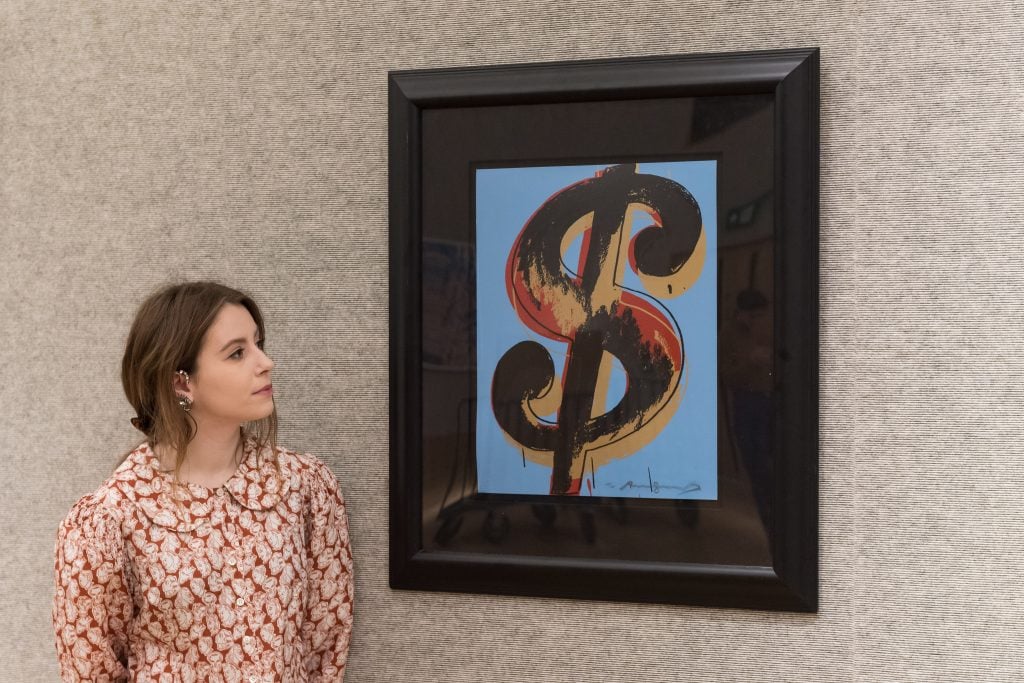Market
‘We All Start Somewhere’: A Defense of an Art World Underclass, the So-Called ‘Gmail Art Advisor’
"The term is being used to disparagingly refer to any girl out here hustling," said one advisor.

"The term is being used to disparagingly refer to any girl out here hustling," said one advisor.

Dorian Batycka

While many major collectors want a Picasso, say, or a George Condo, the first step, usually, is to score something else: a broker with the access to help them actually buy one.
The role of the art advisor has changed over the years, and with it a new underclass has emerged: the Gmail art advisor. These artful gatherers of commissions have been chronicled by Katya Kazakina in Artnet News once before. They were defined as “a pestilence.” They are often “young and related to an art dealer or collector (i.e., nepo babies),” and work in ill-defined ways, sometimes unscrupulously gathering commissions from both buyers and sellers (a major, if not existential, faux pas in among traditional art advisors). Perhaps they use hyphenates, like “advisor-dealer,” Kazakina wrote.
Suzanne Gyorgy, the global head of art advisory and finance at Citi bank—as traditional an advisor as it gets—noted that a key part of her trade’s’ ethics involves a fiduciary duty to the client. “That means no acting as a go-between or intermediary between a gallery and client, no collecting of introduction fees,” she said. “Everything we do is very transparent.”
To some, Gmail art advisors are the bottom feeders of the art market. The term was coined in 2019 by art-meme maker Hilde Lynn Helphenstein, aka Jerry Gogosian. “Back when I was working in a gallery, I noticed that a lot of these half-drunk chardonnay-sipping housewives would come in from Malibu or whatever and ask for discounts,” she told Artnet News. “They would give me their card and it would always say ‘whoever’ at Gmail dot com.”

A staff member looks at ‘$’ unique screenprint in colors, 1982, by Andy Warhol at Bonhams auction house in London, 2022. Photo by Wiktor Szymanowicz/Anadolu Agency via Getty Images.
But some Gmail art advisors are now making a case for themselves as bold new upstarts, who can often be found perusing sales floors and attending big-ticket biennale openings.
Andrea Lledo, head of her own private art advisory service, which she founded in 2019, says that she understands criticism of the so-called Gmail art advisor, but adds that “the term is being used to disparagingly refer to any girl out here hustling. We all start somewhere, but in time you learn the rules and who you can trust in the shark filled waters of the art game.”
Lledo may be independent, but she said she’s on the scene just like any other advisor, attending art fairs and auctions, and gathering as much intel as possible in person. She combs through opaque price points, and finds out if there are third-party guarantees on works that her clients may not be aware of. “If you’re not physically at the auction or on the sale floor,” she told me from the sale floor of Art Basel earlier this summer, “it’s difficult to get information, and this is what makes the difference between a so-called ‘gmail art advisor’ and a seasoned vet.”
Daniel Oglander is a New York-based art advisor who got his start not as the nepo baby of a collector or celebrity, but rather as an art handler working for Phillips. “I got my start in the art game by virtue of the loading dock,” he told Artnet News.

Daniel Oglander attends The New York Ball: The 20th Anniversary Benefit for the European School Of Economics at Trump Tower in 2014. Photo by Monica Schipper/FilmMagic.
“I think that when it comes to the nature of art advisory, it’s about building trust through scrupulous and trustworthy relationships, which have to be constructed over time.” Since 2014, Oglander has been advising clients and taking commissions as a percentage of the retail price. He deals primarily in contemporary art, on the secondary market, charging his client a 10 percent fee on the final sale price.
Independent advisors today may take to a Telegram group to try to match buyers with sellers, or there may be young art historians or curators flipping the occasional artwork to supplement their income. These hustlers may actually perform an essential function of the mid-level art market; not everyone can—or wants—to be Sandy Heller or Philip Hoffman. There are plenty of art advisors content to work with close family and a small network of collectors within their social network.
Oglander sees his role as more of an educator and connector of dots, creating dialogues about what his clients are interested, or organizing trips and studio excursions for collectors to meet and congregate with the artists and galleries in his network.
What separates a Gmail art advisor from a traditional one, to him, is not necessarily pedigree, but rather industry access and the upholding of accepted standards in terms of fees and transparency. “You’re not going to get anyone to admit to being a Gmail art advisor,” he said, “but what I can say is that there are gatekeepers who patrol access to the market for art, and our role as young and more ambitious advisors is to help our clients navigate that.”